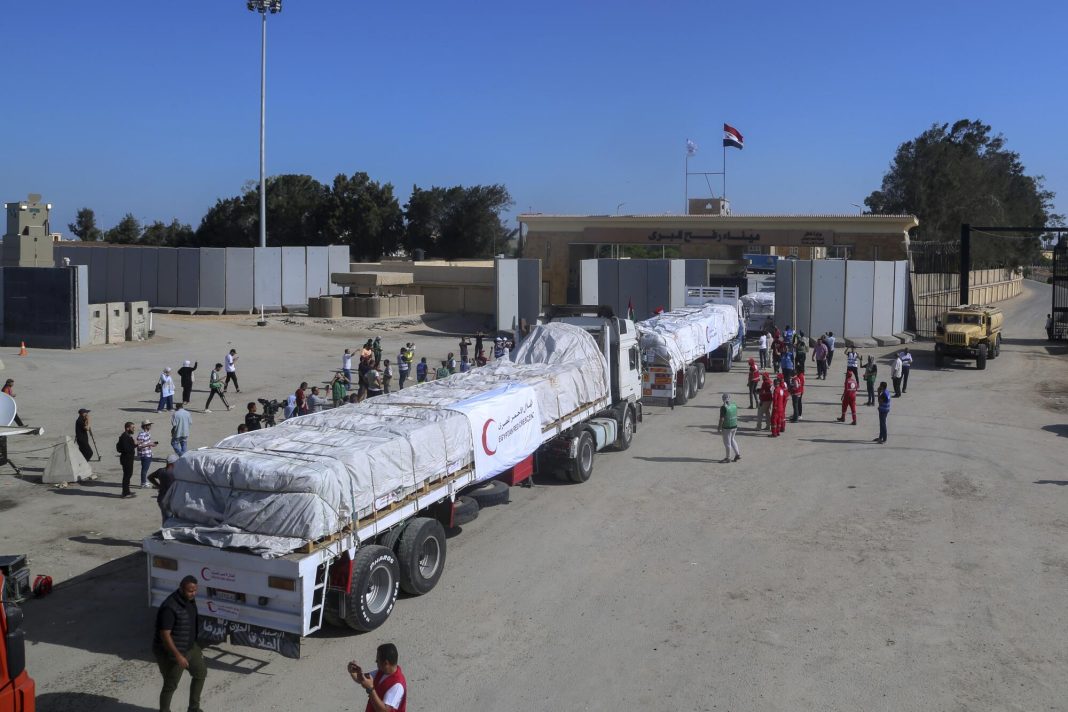Although the United Nations Security Council passed a resolution on Monday that demands an immediate cease-fire in the Gaza Strip, it remains to be seen whether it will have a concrete effect on the war or prove merely to be a political statement.
The measure, Resolution 2728, followed three previous attempts that the United States had blocked. It passed by 14 votes, after the United States abstained from voting and did not employ its veto.
The resolution also calls for the unconditional release of all hostages and the end to barriers to humanitarian aid.
Israel’s government condemned the vote, and early indications are that the U.N.’s action has changed little on the ground or spurred diplomatic progress.
Days after the vote, here’s a look at what has changed and what might happen next:
Has the resolution affected fighting?
Senior Israeli officials said that they would ignore the call for a cease-fire, arguing that it was imperative to pursue the war until it has dismantled the military wing of Hamas, the militant group that led the Oct. 7 attack on Israel.
Since Monday, there has been no apparent shift in the military campaign. Israel’s air force continues to pound Gaza with strikes, and Hamas is still launching attacks.
Israel’s military is pressing on with a raid at Al-Shifa Hospital in northern Gaza, the territory’s biggest medical facility, as well as its offensive in Khan Younis, the largest city in the south, where fighting has been fierce.
If Israel doesn’t heed the resolution, what can the U.N. do?
The Security Council has few means to enforce its resolutions. The Council can take punitive measures, imposing sanctions against violators. In the past, such measures have included travel bans, economic restrictions and arms embargoes.
In this case, however, legal experts said that any additional measure would require a new resolution and that passing it would require consent from the council’s five veto-holding members, including the United States, Israel’s staunchest ally.
There may be legal challenges as well. While the United Nations says that Security Council resolutions are considered to be international law, legal experts debate whether all resolutions are binding on member states, or only those adopted under chapter VII of the U.N. charter, which deals with threats to peace. The resolution passed on Monday did not explicitly mention Chapter VII.
U.N. officials said it was still binding on Israel, but some countries disagreed. South Korea said on Monday that the resolution was not “explicitly coercive under Chapter VII,” but that it reflected a consensus of the international community.
Crucially, the U.S. ambassador to the United Nations, Linda Thomas-Greenfield, maintained that the resolution was nonbinding. The United States, which holds significant power on the Security Council because of its permanent seat, likely views the passage of the resolution as more a valuable political instrument than a binding order, experts said.
The U.S. abstention sends a powerful signal of its policy priorities even if, in the short term, the Security Council is unlikely to take further steps, according to Ivo H. Daalder, a former American ambassador to NATO.
“Neither Israel or Hamas is going to be swayed by a U.N. resolution,” Mr. Daalder said.
What about aid?
Israel controls the flow of aid into Gaza, and after five months of war, Gazans are facing a severe hunger crisis bordering on famine, especially in the north, according to the United Nations and residents of the territory.
Aid groups have blamed Israel, which announced a siege of the territory after Oct. 7. They say officials have impeded aid deliveries through inspections and tight restrictions.
Israel argues that it works to prevent aid reaching Hamas and says that its officials can process more aid than aid groups can distribute within the territory. Growing lawlessness in Gaza has also made the distribution of aid difficult, with some convoys ending in deadly violence.
Little has changed this week. The number of aid trucks entering Gaza on Tuesday from the two border crossings open for aid roughly matched the average daily number crossing this month, according to U.N. data. That figure, about 150 trucks per day, is nearly 70 percent less than the number before Oct. 7.
How has the resolution affected diplomacy?
Israel and Hamas appear to still be far apart on negotiations aimed at brokering a halt in fighting and an exchange of hostages for Palestinian prisoners.
Mediators have been in Qatar to try to narrow the gaps. But late Monday, Hamas rejected Israel’s most recent counterproposal and its political leader, on a visit to Tehran this week, said the resolution showed that Israel was isolated diplomatically.
Prime Minister Benjamin Netanyahu of Israel has argued that the resolution set back negotiations, emboldening Hamas to hold out for better terms.
The biggest sticking point in the cease-fire talks had recently been the number of Palestinian prisoners to be released, in particular those serving extended sentences for violence against Israelis, U.S. and Israeli officials have said.


